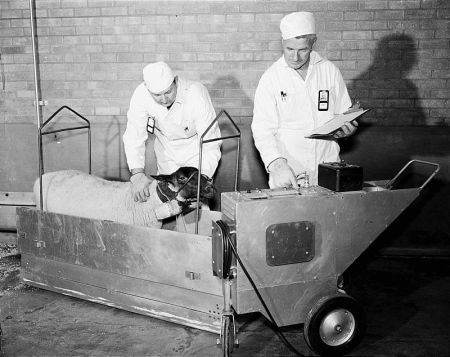The Energy Department project to tear down the Plutonium Finish Plant at the Hanford Site was halted in mid-December 2017 after radioactive dust was discovered far off the plant site. T As crews demolished a shuttered nuclear weapons plant during 2017 in central Washington, specks of plutonium were swept up in high gusts and blown miles across a desert plateau above the Columbia River. The releases at the Department of Energy cleanup site spewed unknown amounts of plutonium dust into the environment, coated private automobiles with the toxic heavy metal and dispensed lifetime internal radioactive doses to 42 work
The contamination events went on for nearly 12 months, getting progressively worse before the project was halted in mid-December. Now, state health and environmental regulators, Energy Department officials and federal safety investigators are trying to figure out what went wrong and who is responsible.
The events at the Hanford Site, near the Tri-Cities area of Richland, Pasco and Kennewick, vividly demonstrate the consequences when a radioactive cleanup project spirals out of control.
The mishap occurred at one of the nation’s most radioactively contaminated buildings, known as the Plutonium Finishing Plant. The factory, which opened in 1949 a few miles from the Columbia River, supplied plutonium for thousands of U.S. nuclear weapons before it was shut down in 1989.
The exposures from the plutonium releases in 2017 were minuscule bestimated to be a small fraction of the background radiation that every human gets from nature. But unlike cosmic radiation or radon gas, plutonium can lodge itself inside the body and deliver tissue damaging alpha particles over a lifetime…. As workers removed equipment to prepare for walls to be torn down, air monitoring alarms sounded almost every day, he said. Workers were subjected to repeated nasal smears to determine if they had breathed plutonium dust, he said….Seven employee automobiles were contaminated at the plant site, according to a Jan. 9, 2018 letter from the state Department of Ecology to Doug Shoop, the federal site chief at Hanford… The demolition, costing $57 million, was being conducted by one of the nation’s largest engineering firms, CH2M, a unit of Texas-based Jacobs Engineering. CH2M is now under federal investigation for the releases, according to a letter sent by the Energy Department’s enforcement office in late March 2018…
In March 2018, the company released a preliminary analysis [pdf] of the contamination and blamed it on a half dozen factors, including a “fixative” that was supposed to bind the dust but was too diluted to work properly and a decision to accelerate demolition when the contamination seemed to be stable. The Energy Department plan for the demolition originally required the contractor to remove debris as it accumulated. But in January 2017, just before the first releases, officials authorized CH2M to allow the debris to pile up, according to a monthly site report by an inspector for the Defense Nuclear Facilities Safety Board, an independent agency. In fact, workers at the plant said the demolition site was ringed by 8-foot-tall piles of radioactive debris with little to prevent dust from blowing off…
The problems at the Plutonium Finishing Plant were not an isolated event at Hanford, which has struggled with its cleanup for more than a decade.
Work was stopped five years ago on key parts of a $16.8-billion waste treatment plant that is supposed to turn 56 million gallons of radioactive sludge into glass. Technical deficiencies in its design are still being studied, while delays mount. Several years ago, the Energy Department pushed back the full startup by 17 years to 2039, though it hopes to begin treating some less radioactive waste by 2022….In 2017, a tunnel that stored railroad cars full of contaminated equipment collapsed. The Energy Department pumped the 358-foot long tunnel full of a concrete mixture. A decision is pending about what to do with a second storage tunnel 1,688 feet long.
The state attorney general, along with Hanford Challenge and a union, is suing the Energy Department for venting noxious gases from underground waste tanks over recent years, sickening workers.
Smith, the Ecology manager, said a lot of cleanup progress has been made at Hanford. Hundreds of buildings have been torn down. Much of the soil along the banks of the Columbia River has been cleaned up enough for any future use. And the site’s nine nuclear reactors have been put in stable condition…
One of those facilities, known as 324 Building,[Chemical Materials Engineering Laboratory] was used to extract plutonium from spent fuel, said Robert Alvarez, a former assistant secretary of Energy and a longtime critic of the cleanup. The facility has civilian waste from Germany, sent as part of a research project, as well as large amounts of radioactive waste that was placed in unlined burial pits, he said. Records of what lies in the pits were destroyed in 1988, he said.
Excerpts from RALPH VARTABEDIAN, Contamination from a nuclear cleanup forced a shutdown. Investigators want to know who is responsible, LA Times, Apr. 16, 2018


